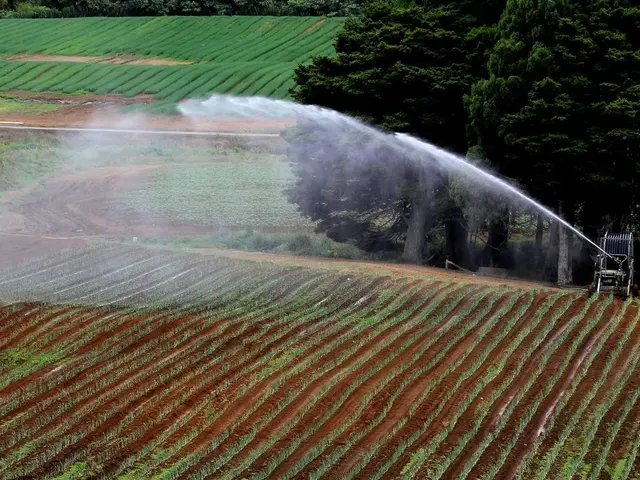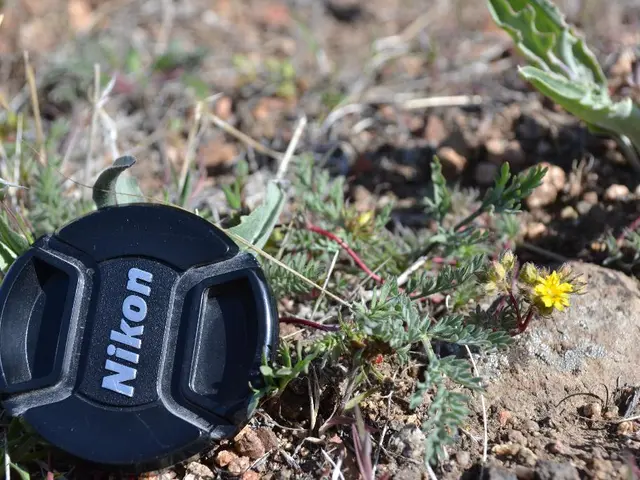Rich Soil Moisture Levels: Crucial for Vibrant Plant Development
In the intricate dance of life, soil plays a vital role as the foundation for plant growth. The ideal soil moisture percentage is a crucial factor that determines the health and productivity of plants, influenced by various elements such as plant species, soil type, and environmental conditions.
Different plants have varying water needs, depending on their physiology and natural habitat. Most crops thrive within a soil moisture content range of about 20% to 60%, but this varies widely by species. For instance, trees, flowers, and shrubs typically require a moisture level between 21% and 40%, while vegetables thrive in a higher humidity range of 41% to 80%.
Soil texture (sand, loam, clay, etc.) affects both the soil’s ability to hold water and the amount available to plants. Sandy soils have a lower field capacity (around 12%) and a smaller total available water content than clay soils (which can hold up to 42%). This means that while sandy soils absorb water easily and allow it to penetrate quickly, they have poorer water retention compared to clay soils.
The optimal soil moisture levels lie between the soil’s field capacity (the maximum amount of water soil can hold after excess drainage) and the permanent wilting point (the moisture below which plants cannot recover from water stress). Balancing between these two limits ensures adequate water without oxygen deprivation.
Environmental factors, such as temperature and humidity, also significantly impact soil moisture. Higher temperatures increase evaporation and transpiration, altering soil moisture needs. Climate change can further affect soil moisture and influence the adoption of agricultural adaptation strategies.
The presence of vegetation can significantly influence soil moisture levels due to differences in root systems and water consumption rates. Vegetation helps retain moisture in the soil, preventing runoff and promoting water infiltration. On the other hand, too much vegetation can lead to waterlogging, reducing oxygen availability and promoting root rot.
Maintaining soil moisture within the optimal range is essential for maximizing plant growth, nutrient uptake, root health, and crop yield. Too little moisture (below the permanent wilting point) causes water stress, inhibiting nutrient uptake and leading to wilting and stunted growth. Conversely, too much moisture (above the field capacity) can reduce oxygen availability in the root zone, causing root rot and negatively impacting growth.
A simple and effective way to estimate soil moisture is by sticking your finger into the soil. If the soil feels damp, it likely has sufficient moisture. If it feels dry, it may need watering. Frequent rainfall maintains high soil moisture levels, while prolonged or heavy rainfall can cause erosion.
In conclusion, understanding the ideal soil moisture percentage for various plants is key to nurturing healthy, productive gardens and crops. By considering factors such as plant type, growth stage, climate, and soil type, we can create optimal growing conditions that promote growth, nutrient uptake, root health, and crop yield.
- The science of soil health plays a significant role in the health-and-wellness of plants, as the ideal soil moisture percentage is a critical factor that impacts the overall productivity of various plants.
- In the realm of health-and-wellness, maintaining the right soil moisture levels can lead to optimal nutrient uptake, root health, and crop yield, contributing to a productive lifestyle both in gardening and home-and-garden settings.
- In the world of home-and-garden and fitness-and-exercise, with proper soil moisture management, gardeners can cultivate an environment that encourages growth and nurtures strong plant livelihood, similar to maintaining the fitness and well-being of the human body.
- The role of soil moisture in the health and growth of plants extends beyond gardening, into the broader realms of nutrition and lifestyle, as proper soil moisture management can produce nutritious food in addition to fostering a healthy and harmonious environment.




